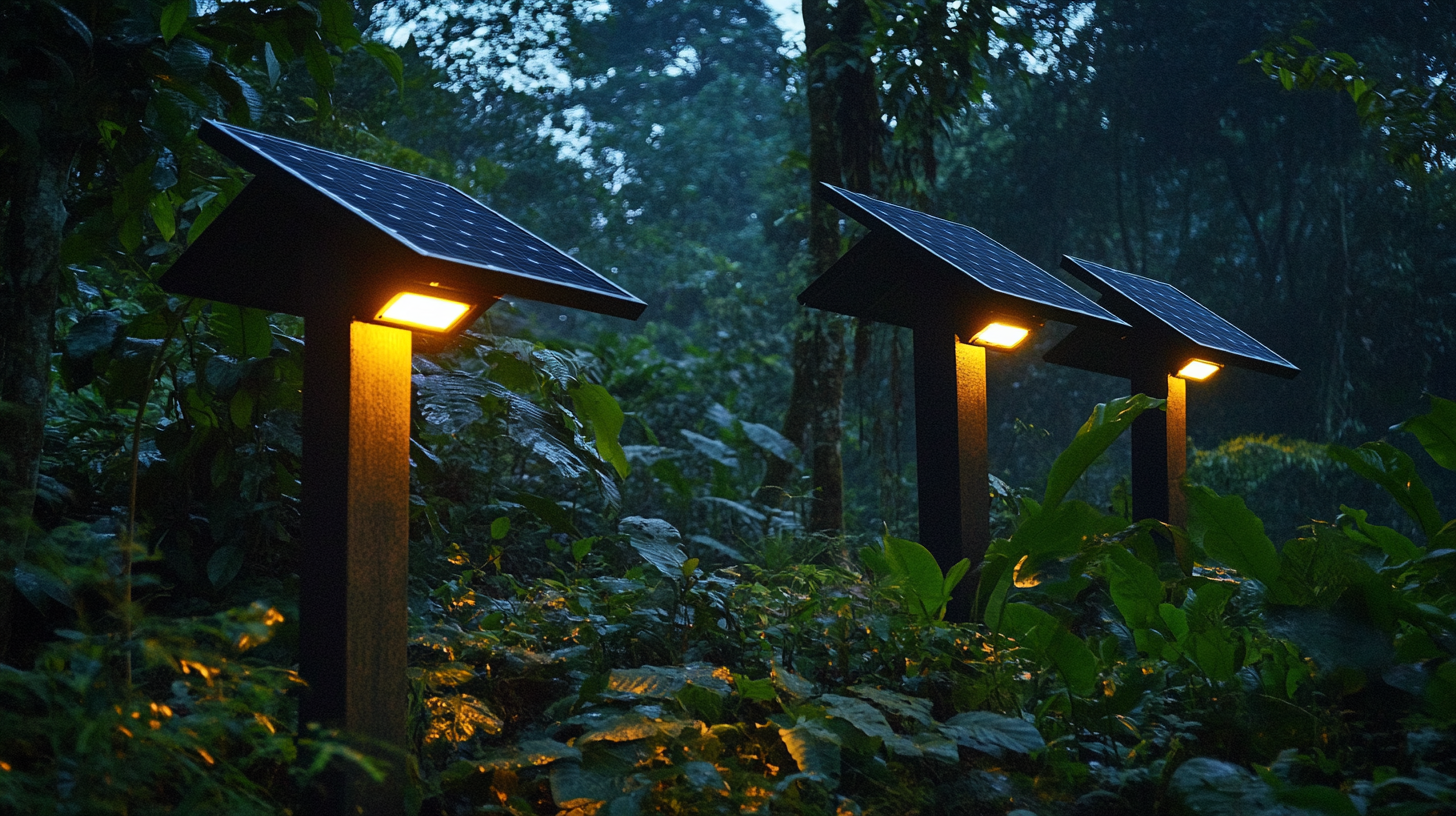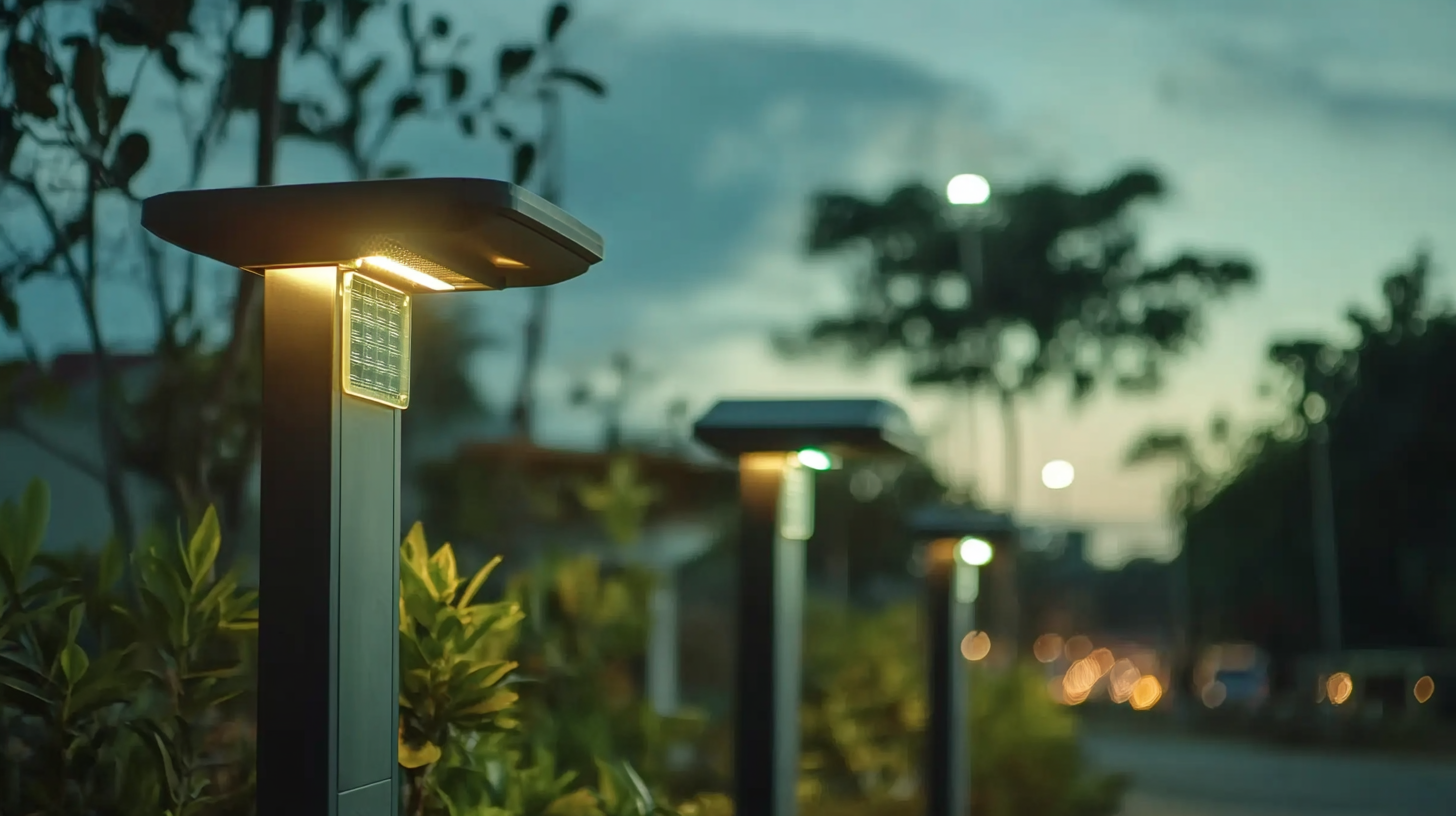15 Ways Outdoor Solar Lights Enhance Sustainability and Save Energy Globally
As global awareness of climate change and environmental degradation continues to rise, the search for sustainable solutions has never been more urgent. Outdoor solar lights have emerged as a significant player in this quest, providing an eco-friendly option for lighting that not only reduces energy consumption but also minimizes carbon footprints. According to a report by the International Energy Agency (IEA), transitioning to renewable energy sources, like solar power, can lead to a potential 70% reduction in greenhouse gas emissions by 2050. This makes outdoor solar lights not just a practical choice but a crucial component of modern sustainability efforts.
Furthermore, outdoor solar lights offer remarkable energy savings for both residential and commercial settings. A recent study by the U.S. Department of Energy highlights that utilizing solar-powered lighting can reduce energy costs by up to 80%. This is particularly vital in urban areas where energy consumption is at its peak. As cities around the world grapple with rising energy demands, outdoor solar lights stand out as an efficient and sustainable solution that aligns with global energy goals. Embracing these innovative lighting options can significantly contribute to energy conservation while enhancing the aesthetic appeal and safety of outdoor spaces.

Benefits of Solar Energy: Why Outdoor Solar Lights Matter
As the global focus on sustainable energy solutions intensifies, outdoor solar lights emerge as a practical measure to harness the benefits of solar energy. By utilizing photovoltaic cells, these lighting systems not only illuminate spaces but also dramatically reduce dependency on fossil fuels. The integration of LED technology ensures that energy consumption is kept to a minimum while maximizing the effectiveness of light output. This combination of solar power and energy-efficient lighting creates a win-win scenario for businesses looking to enhance their sustainability efforts. In a recent project highlighting the design of an LED lighting system powered by solar PV cells for a proposed business complex, the potential of such systems becomes even clearer. By implementing solar-powered outdoor lighting, commercial spaces can meet their energy needs in an eco-friendly manner, resulting in significant operational cost savings over time. These installations contribute to reducing carbon footprints and promoting innovative energy designs that align with modern sustainability goals. This strategic approach not only adheres to environmental standards but also showcases a commitment to renewable energy, ultimately setting a precedent for future developments.

Innovative Designs: How Solar Lights Improve Outdoor Aesthetics
Innovative designs in outdoor solar lighting not only enhance aesthetics but also contribute significantly to sustainability. As the global landscape lighting market reaches a projected size of approximately USD 12.49 billion in 2023 and is anticipated to grow at a CAGR of 8.9% through 2030, the incorporation of solar technologies is driving a new wave of eco-friendly design solutions. Designers are increasingly choosing solar-powered fixtures that provide energy-efficient lighting options, allowing homeowners to enjoy elegant outdoor spaces while reducing their carbon footprint.
Moreover, the high-end lighting market, expected to grow from USD 20.26 billion in 2024 at a CAGR of over 7.7% until 2034, underscores the shift towards sustainable lighting solutions. The aesthetic appeal of solar lights enhances pathways, gardens, and patios, creating inviting atmospheres that align with modern design sensibilities. With the rise of smart technologies showcased at events like the Autumn Lighting Fair in Hong Kong, outdoor solar lights are becoming integral to the concept of smart cities, where innovation meets sustainability.
As we continuously explore vertical garden ideas and other landscape enhancements, the synergy between nature and sophisticated solar lighting designs is undeniable. These innovations not only promise to elevate outdoor aesthetics but also reflect a global movement towards sustainability, making spaces more beautiful while mindful of energy consumption.

Cost Savings: Reducing Energy Bills with Solar Lighting Solutions
Outdoor solar lights are transforming the way we illuminate our environments while simultaneously promoting sustainability and energy savings. In recent years, the global shift towards solar energy has been supported by significant data. According to the International Renewable Energy Agency (IRENA), installed solar photovoltaic capacity reached over 800 GW by the end of 2020, marking a 22% increase from the previous year. This surge in solar energy use is particularly significant for outdoor lighting, where traditional systems contribute substantially to energy consumption.
The financial benefits of adopting solar lighting solutions are substantial. According to the National Renewable Energy Laboratory (NREL), solar-powered outdoor lights can reduce energy bills by up to 75% over their lifetime, depending on usage and local electricity rates. For instance, municipal projects that have transitioned to solar lighting have reported saving millions annually in utility costs. Furthermore, these lights require minimal maintenance and have a long lifespan, generally lasting about 25 years, which drastically reduces replacement costs associated with conventional lighting systems.
Beyond immediate cost savings, solar lights promote environmental responsibility. A study from the U.S. Department of Energy reveals that by switching to solar outdoor lighting, communities can significantly decrease greenhouse gas emissions. Specifically, every kilowatt-hour of energy saved equates to approximately 0.92 pounds of CO2 emissions avoided. As cities and towns look to enhance sustainability, leveraging solar technologies not only contributes to a greener future but also fosters economic resilience through lower operational costs, making solar outdoor lights an ideal solution for energy-conscious consumers worldwide.

Environmental Impact: Minimizing Carbon Footprint with Solar Technology
Harnessing solar technology in outdoor lighting systems not only illuminates our spaces but also plays a crucial role in minimizing our carbon footprint. According to a report by the International Renewable Energy Agency (IRENA), transitioning to renewable energy sources can reduce greenhouse gas emissions by up to 70% by 2050. Outdoor solar lights, powered entirely by sunlight, contribute significantly to this shift, providing an energy-efficient alternative to traditional lighting, which often relies on fossil fuels.
In addition to their environmental benefits, outdoor solar lights present substantial savings on energy costs. The U.S. Department of Energy states that outdoor lighting accounts for nearly 30% of electricity consumption in commercial buildings. By incorporating solar technology, businesses and homeowners can drastically reduce their dependency on grid power. A study from the National Renewable Energy Laboratory indicates that widespread adoption of solar lighting could lead to savings of over $1 billion annually in electricity costs across the United States alone.
The lifecycle impact of solar lighting systems is also noteworthy. Traditional outdoor lights often require frequent replacements and maintenance, contributing to waste and increased carbon emissions from manufacturing and transportation. In contrast, solar lights are designed for longevity, with many models featuring LED technology that can last up to 25 times longer than incandescent bulbs. This durability reduces not only waste but also the energy consumed in the production and disposal of lighting fixtures, further enhancing their sustainability credentials.
Smart Integration: Using Solar Lights in Sustainable Urban Development
The integration of solar lights in urban development represents a significant leap toward sustainable living. According to a report by the International Renewable Energy Agency (IRENA), transitioning to renewable energy sources, like solar, could provide up to 70% of the world's energy needs by 2050. This is particularly relevant in urban areas, where energy consumption is highest and the need for sustainable solutions is urgent. By incorporating solar lighting systems, cities can effectively reduce their carbon footprints and enhance energy efficiency.
Solar lights not only harness sunlight but also contribute to smart city initiatives. The Global Smart Lighting Market report projects that by 2027, the market will surpass $18 billion, driven in part by the adoption of solar technology. Urban planners are recognizing that solar lights can play a critical role in creating intelligent street lighting systems that can adjust brightness based on real-time data. This not only conserves energy but also improves safety and visibility in public spaces. For example, cities like Los Angeles have reported a 30% reduction in energy costs after installing solar-powered LED systems, which underscores the financial benefits as well.
Furthermore, solar lights can significantly improve urban resilience. The World Bank estimates that cities account for over 70% of global greenhouse gas emissions. By utilizing solar lights in public parks, pathways, and residential areas, municipalities can mitigate the impact of urban heat islands and enhance biodiversity through better-lit environments that encourage nighttime activity. With these multifaceted benefits, solar lighting is not just a supportive tool; it is essential for sustainable urban development and the promotion of greener, healthier living spaces worldwide.

